Papuan Eclectus Parrot Eclectus polychloros (prev. E. roratus polychloros)


Unusually for parrots, the male and female Eclectus look totally different, so much so that people used to think
(and some still do) that they are different species. The name comes from eclectic (varied). Moreover, unusually for birds, the female is more colourful
than the male, in her intense red and purple plumage compared to his intense green (with red and blue under-wing patches).
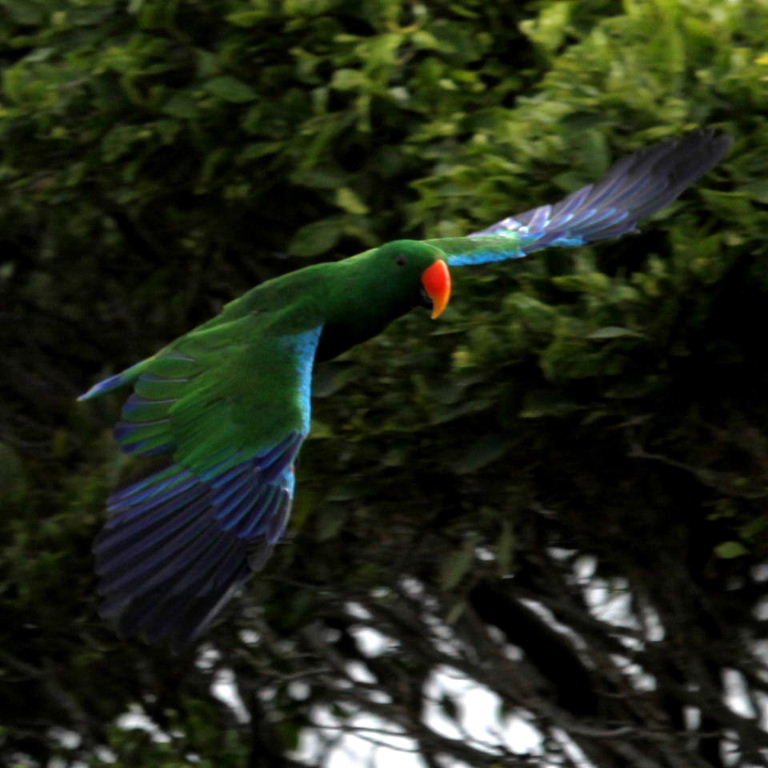 Male Papuan Eclectus in flight.
Male Papuan Eclectus in flight.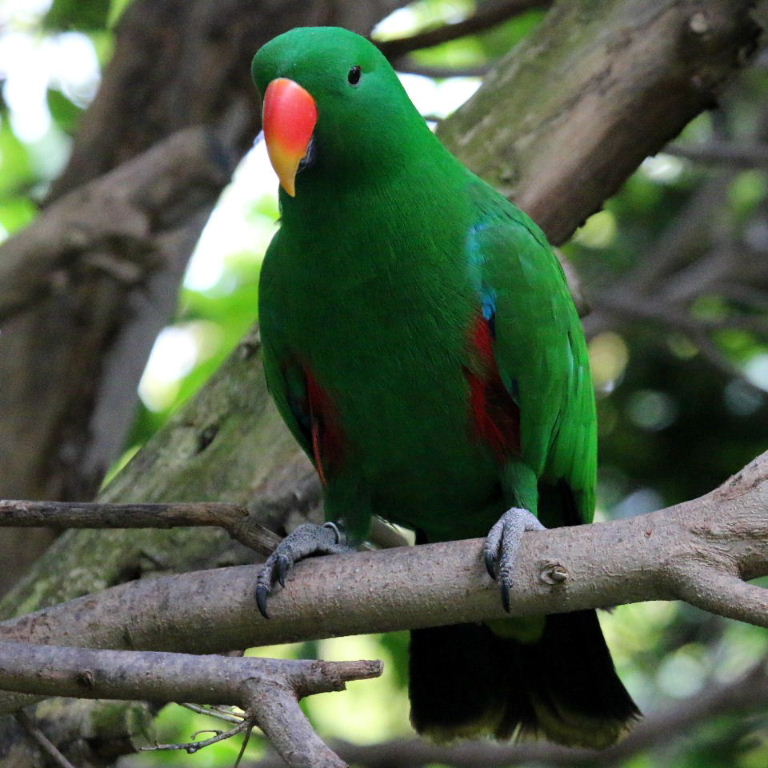 Adult male Eclectus - Red-sided species.
Adult male Eclectus - Red-sided species. Female Red-sided with her violet blue eye shadow.
Female Red-sided with her violet blue eye shadow.Eclectus parrots are native to various Pacific islands around New Guinea and Indonesia and to northeast Australia.
Until 2019, the Eclectus was grouped as one species and there were considered nine living subspecies in different regions.
In 2019, these were reclassified into four living species, fully accepted by main authorities in 2023.


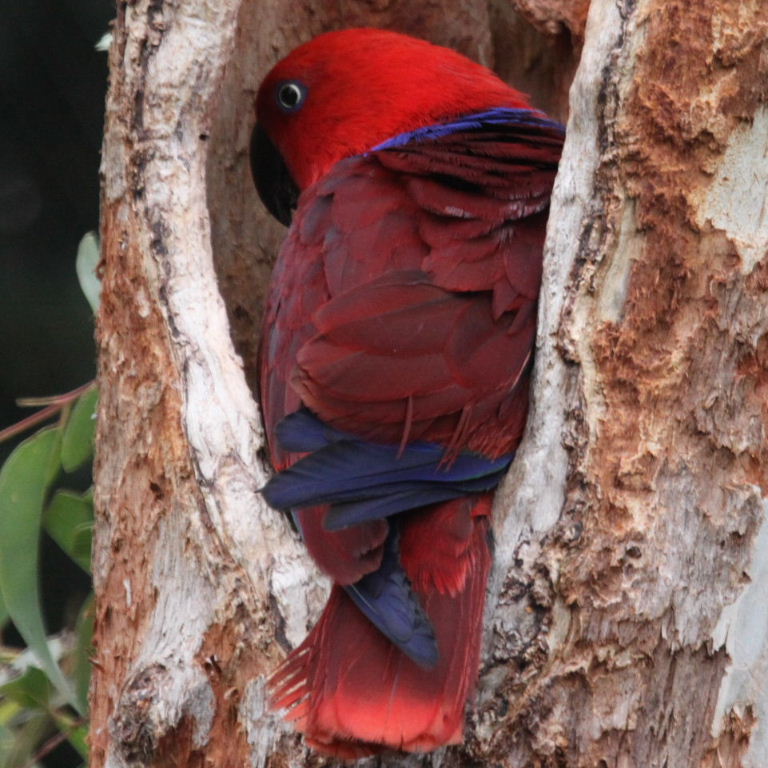
The variation in plumage of some, especially the males, is slight. There is more variation between plumage of
males and females of this unusual species, but there is also considerable variation in plumage among female species. Adult males of
all species have a red-orange top bill with a yellow tip and a black lower bill. Females of all species have a wholly black bill.
Juveniles have a dark bill.
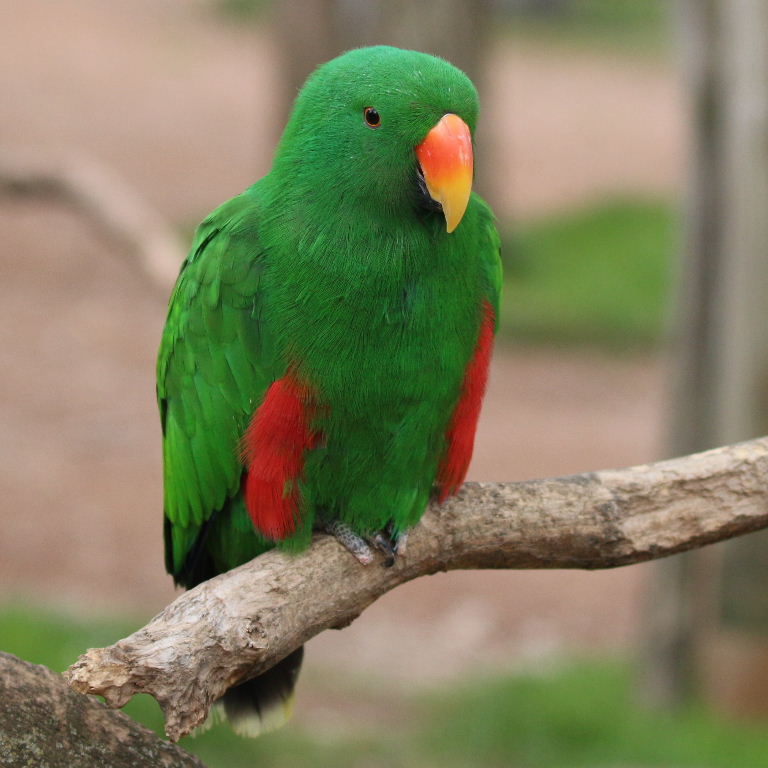
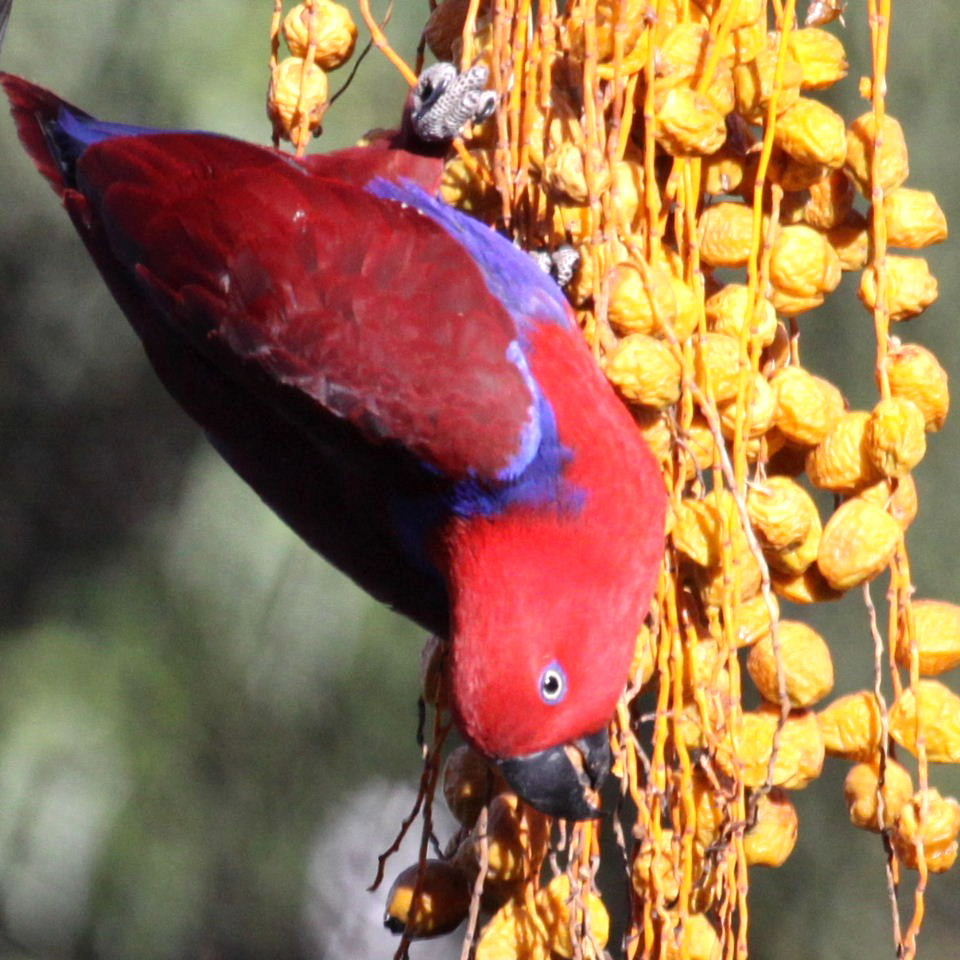
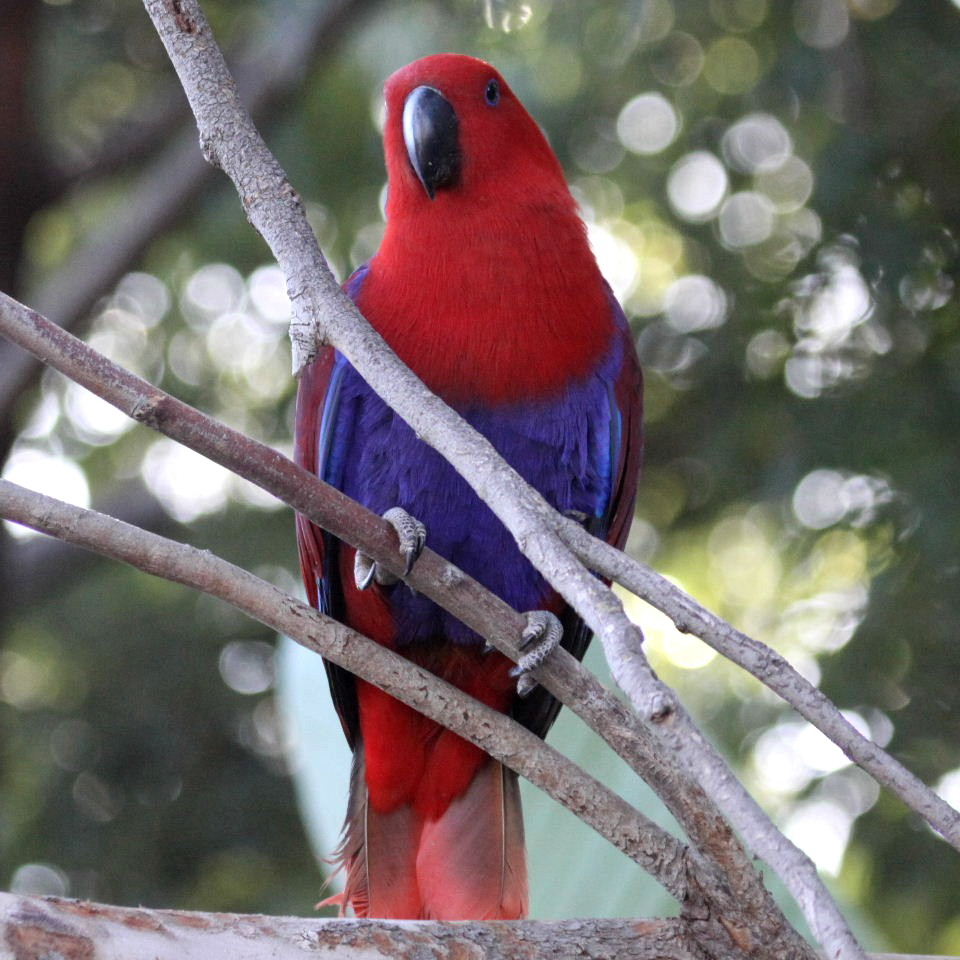
The Papuan, also still called the Red-sided (after the male) is the largest species and has subspecies of
the New Guinea Red-sided (E. p. polychloros of Papua New Guinea, now including the previous Aru and Biak Islands Red-sided), the Australian
(E. p. macgillivrayi) of the northeast Australian mainland, the largest subspecies, and the Solomon Islands Eclectus (E. p. solomonensis).

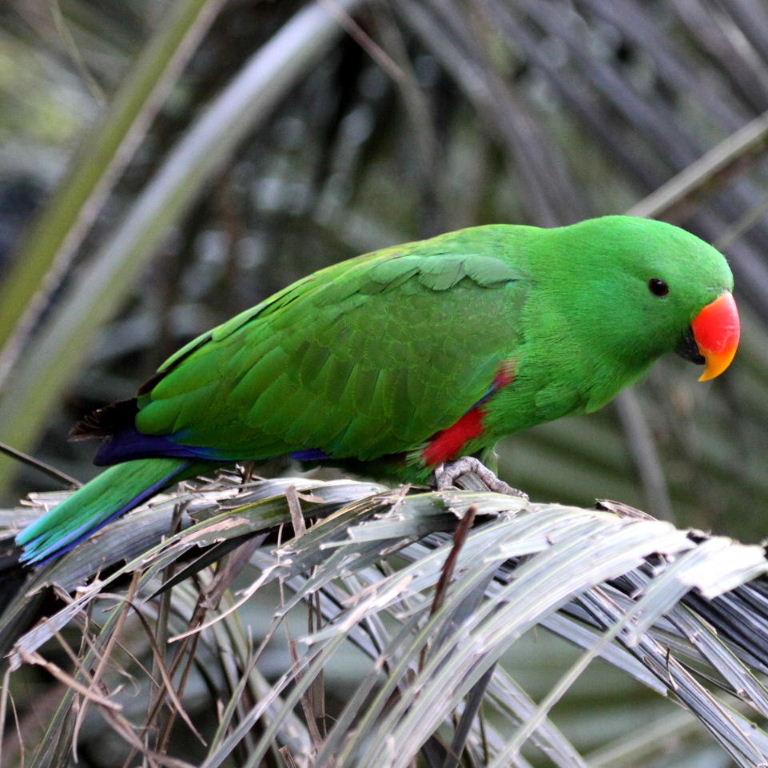
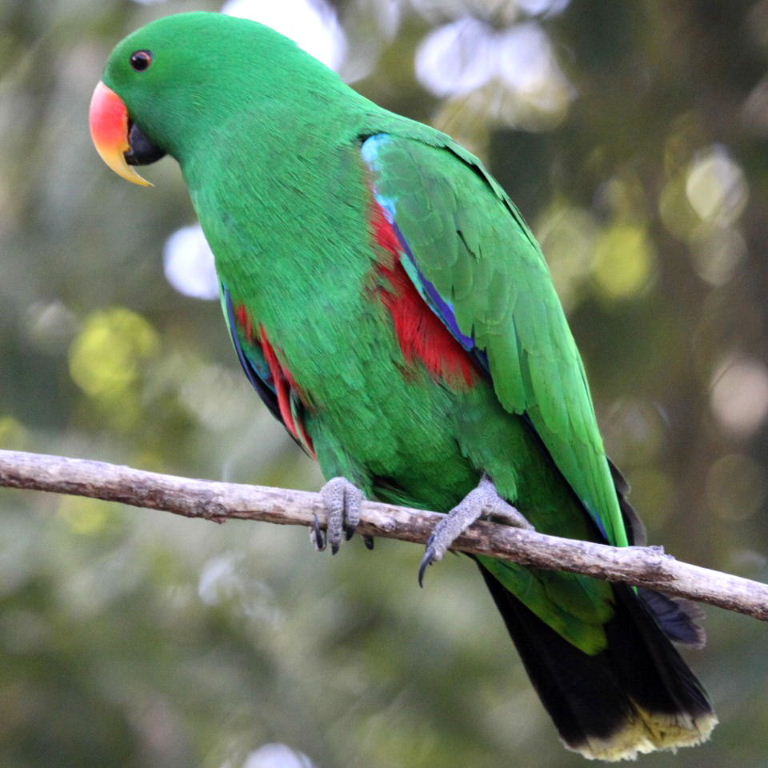
The Papuan male has red irises, unlike other species' males which have orange-gold irises. His dark
blue/green tail has a pale yellow band on the underside in the nominal subspecies (above) but other subspecies can show a wider yellow
band, including on the topside.
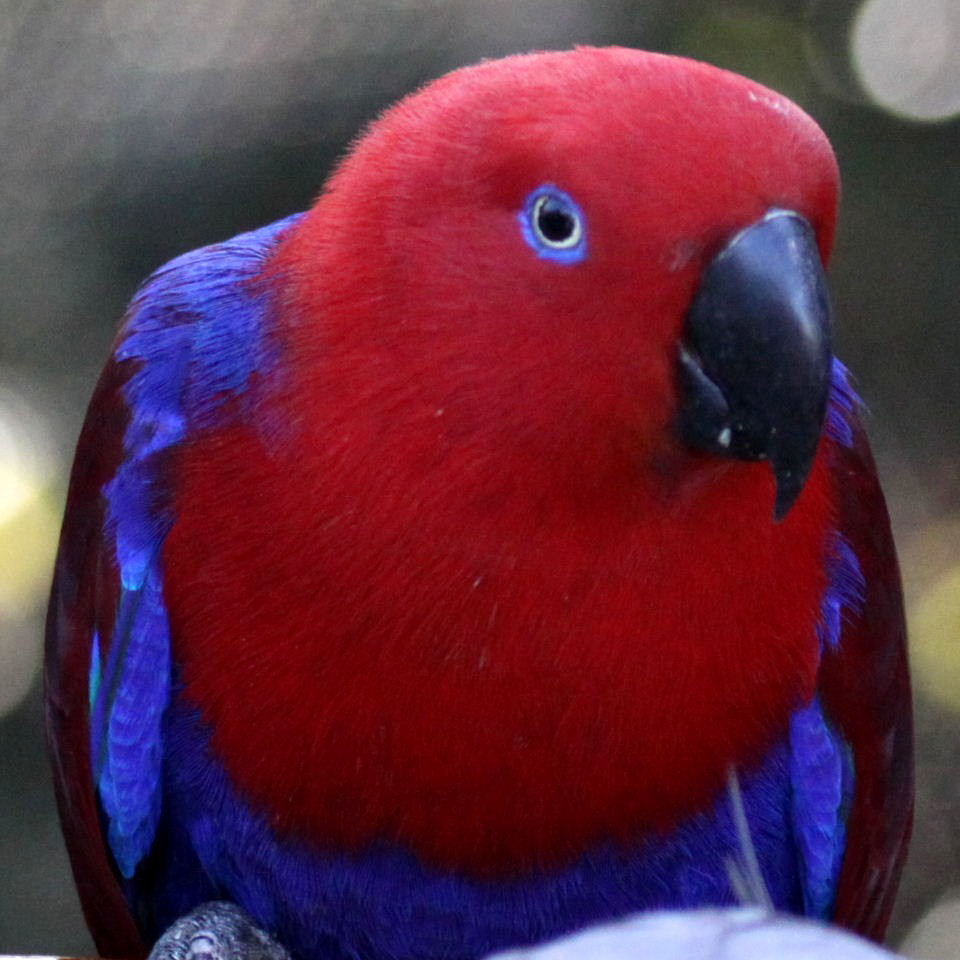


The Papuan female has white, cream or pale yellow irises (other species have orange-gold irises),
has a violet-blue eye-ring, a blue "pinafore" front and no yellow in her plumage (all subspecies). Her tail is dark red or black,
(some variation in subspecies) with a band of lighter red at the tip.




